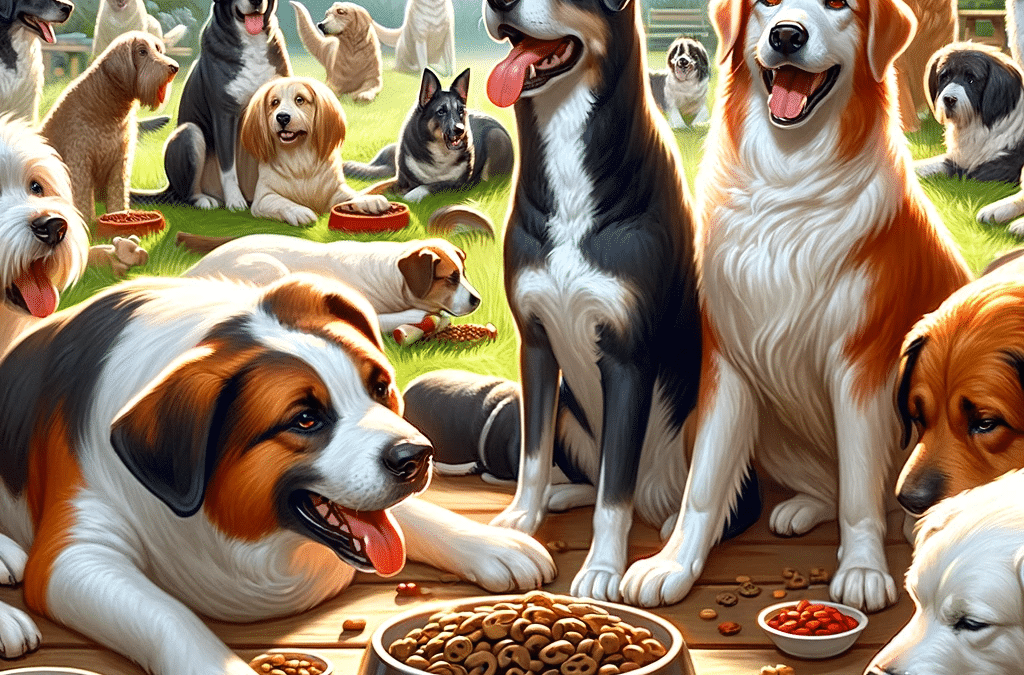Navigating the Complexities of Resource Guarding in Dogs: A Comprehensive Guide
Hey there, pet guardians! Have you ever seen your furry friend getting unusually protective over their food bowl or a favorite toy? This behavior, known as resource guarding, is quite common among dogs. It’s natural but can be concerning, especially when it leads to aggressive behaviors. In this comprehensive guide, we’ll explore resource guarding in dogs in-depth, understand its causes, recognize its signs, and discuss effective management strategies.
What is Resource Guarding?
Resource guarding refers to behaviors exhibited by dogs when they feel the need to protect valuable items – this could be their food, toys, a resting place, or even a human companion. While this might seem alarming, it’s a natural instinct. In the wild, guarding resources could mean the difference between survival and starvation.
The Root Causes of Resource Guarding
Several factors can contribute to resource guarding in dogs:
- Genetics: Some dog breeds might be more predisposed to guarding behaviors.
- Past Experiences: Dogs who’ve had to compete for food or other resources, particularly during their early life, may develop guarding behaviors.
- Lack of Socialization: Inadequate exposure to different environments and situations during the critical socialization period can contribute to resource guarding tendencies.
Recognizing the Signs of Resource Guarding
Identifying resource guarding behaviors is crucial. Here are some signs to look out for:
- Vocalizations such as growling, barking, or whining when someone approaches their resource.
- Body language indicating anxiety or aggression, including stiffening of the body, baring teeth, or lunging.
- Snapping or biting in more severe cases.
In-Depth Management Strategies
- Desensitization and Counterconditioning: This involves gradually and safely exposing your dog to the situation that triggers guarding, while pairing it with positive experiences to change their perception.
- Training Essential Commands: Training your dog to respond to commands like ‘leave it’ or ‘drop it’ can be invaluable in managing resource guarding.
- Creating a Positive Environment: Ensuring your dog feels secure, without the need to compete for resources, is fundamental in preventing resource guarding behaviors.
- Professional Intervention: In cases of intense resource guarding, seeking help from a professional dog behaviorist or trainer is recommended.
Insight from Scientific Research
For a deeper understanding, let’s turn to some significant research studies. “Defining and Clarifying the Terms Canine Possessive Aggression and Resource Guarding: A Study of Expert Opinion” by Jacquelyn A. Jacobs et al. offers expert insights into the behavior. Read the study here.
Also, “Factors associated with canine resource guarding behaviour in the presence of dogs” by the same team provides an understanding of the environmental and psychological aspects influencing resource guarding. Explore this study here.
Long-Term Management and Prevention Tactics
Managing resource guarding is an ongoing process. Here are some long-term strategies:
- Consistent Training: Regular practice of learned commands and reinforcing positive behavior is key.
- Environmental Enrichment: Providing a stimulating environment with ample resources can reduce the need for guarding behaviors.
- Routine Veterinary Check-ups: Health issues can contribute to changes in behavior, including resource guarding.
Special Focus: Resource Guarding in Multi-Dog Households
Resource guarding can be particularly challenging in homes with multiple dogs. Here, it’s crucial to manage the environment to reduce competition for resources. Feeding dogs separately and ensuring each dog has access to their own toys and resting areas can help mitigate guarding behaviors.
Case Studies and Real-Life Examples
Understanding resource guarding through real-life scenarios can be enlightening. For instance, consider a case where a dog growls when approached while eating. By gradually and safely exposing the dog to being approached during mealtime, paired with positive reinforcements like treats or affection, the dog can learn to associate the approach of people with positive outcomes.
Resource guarding in dogs is a complex behavior but not insurmountable. With understanding, patience, and the right strategies, it’s possible to effectively manage and even prevent this behavior. Remember, each dog is unique, and what works for one may not work for another. And for those in the Phoenix area looking for hands-on help, our Dog Aggression Training in Phoenix is here for you.


